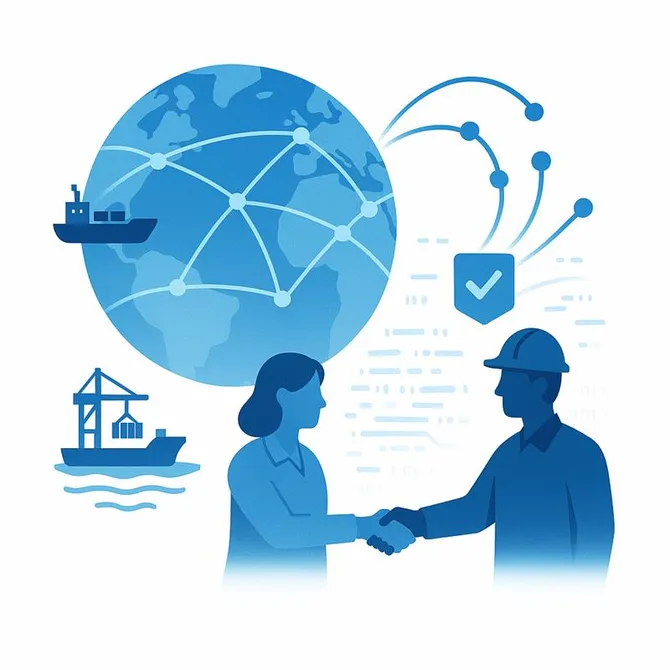Restrictions
- Tide Entrance
- Swell Entrance Restriction
- Ice Entrance Restriction
- Other Entrance Restriction
- Overhead Limitations
Port Equipment
Crane
- Fixed
- Mobile
- Floating
Lift Capacity
- 0-24 Mts
- 25-49 Mts
- 50-100 Mts
- 101+ Mts
Service
- Longshore
- Electrical
- Steam
- Navigation Equipment
- Electrical Repair
Other
- Repair code: Major
- Drydock type: Small
- Railway type: Large
Navigation
- Good Hold Ground
- Turning Area
- Eta Message
- Pilotage Compulsory
- Pilotage Available
- Pilotage Advisability
- Local Assist
- Tug Salvage
- Tug Assistance
- Wharves
- Anchor
- Med Mooring
- Beach Mooring
- Ice Mooring
Communication
- Phone Comm
- Fax Comm
- Radio Comm
- Vhf Comm
- Air Comm
- Rail Comm
- Quarantine Pratique
- Quarantine - Sanitation
- Other Quarantines
- First Port of Entry
- US Representative
FAQ about SEATTLE port (USSEA) — United States of America (the)
Key information on SEATTLE Port.
SEATTLE (UN/Locode: USSEA), United States of America (the) is a seaport located at approximately 47.62120° N, -122.36430° E.
What type of vessels SEATTLE Port handles?
Port usage is Other (64.04%), Cargo (24.27%), Passenger (8.77%) and Tanker (2.92%).
Where is SEATTLE Port located?
Coordinates: 47.62120° N, -122.36430° E.
- PUGET SOUND — UN/Locode: USPGQ — 47.82000° N, -122.43000° E
- TACOMA — UN/Locode: USTIW — 47.27400° N, -122.40400° E
- EVERETT — UN/Locode: USPAE — 48.00400° N, -122.20500° E
What are the key facilities and depths at SEATTLE Port?
Harbor type/size: Coastal Natural and Large. Cranes: mobile cranes, fixed cranes and floating cranes. Lifting: 100 MT+ lifts. Support: wharf loading/offloading, anchorage loading/offloading, good holding ground and turning area. Depths: channel depth 9.4m - 10m; anchorage depth 23.2m - OVER; cargo pier depth 23.2m - OVER; oil terminal depth 12.5m - 13.7m and maximum draft approx. 15.08 m.
What restrictions apply at SEATTLE Port?
Entrance/operational restrictions — tide: no specific restriction; swell: no specific restriction; ice: none; overhead limits: apply and other: may apply.
What communication options and marine services are available?
Communication & port formalities — telephone: available; radio (VHF): available; air services: available; rail: available; ETA message: required; quarantine pratique: available; deratting certificate: available; first port of entry: available and additional quarantine services available. Pilotage & towage — pilotage: compulsory; tug assistance: available and tug salvage: not available.
What vessel types and sizes do SEATTLE Port handle?
Vessel types historically calling: Bulk Carrier, Container, Fishing, General Cargo, Offshore, Passenger, Pleasure Craft, Ro Ro, Special Craft, Tanker, Tugs Harbor Craft and Unspecified. Typical extremes observed (AIS-derived): max LOA: 511; max beam: 63; max draft: 18.5; max DWT: 174,897; max GT: 169116; max NT: 154047; min LOA: 10; min draft: 1.1; min DWT: 80; min GT: 297; min NT: 104 and build year: 1967.
Who are the service providers at SEATTLE Port?
Service providers include Inglasco International Ltd.
Ship Agents at port
Bunker Suppliers at port
Service Providers at port
Suppliers at port
Shipyards at port
| Port Usage | |
|---|---|
| Unlocode | USSEA |
| Latitude / Longitude | 47.62º, -122.36º |
| Country | USA |
| Channel Depth | 9.4m - 10m |
|---|---|
| Anchorage Depth | 23.2m - OVER |
| Cargo Pier Depth | 23.2m - OVER |
| Oil Depth | 12.5m - 13.7m |
| Offshore Maximum Vessel Draft (m) | 15.08 |
Nearby Ports
| Harbour Type | Coastal Natural |
|---|---|
| Harbour Size | Large |

